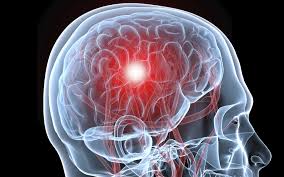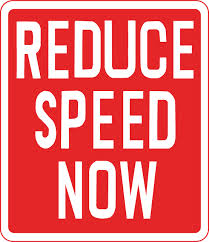Some of the links are embedded into the highlighted text and others are cited below. To view part #1 click here.
#3) Chiropractic neck adjustments cause strokes
Yikes! This is a scary one and the people who spread this myth are counting on that. There are only a handful of studies that look at this, few of them by testing the anatomical or physiological aspects of the body necessary to scientifically prove a causative effect. Most of these studies come to varied opinions by simply looking at statistics and applying different forms of analysis. Since the estimated risk range is HUGE (1 in 5000 to 1 in 5 million {[i]} depending on who you read) we must carefully read the body of evidence in its entirety before we jump to conclusions, because a range this big is very suspicious and essentially tells us nothing. The most telling study that I have come across is from a Chiropractic school where the least experienced “doctors-to-be” practice on people. If there is any place that would run a high risk it would be in the schools. However Jaskoviak {[ii]} reported that not a single case of stroke occurred in approximately five million cervical “manipulations” at The National College of Chiropractic Clinic from 1965 to 1980. Not one!
Everything comes with a risk. That is a fact that cannot be ignored by anyone. Before I go into too much detail lets look at the supposed risk of chiropractic compared to other things that most of us do without giving a second thought. According to www.squidoo.com/oddsdying on the odds of dying:
 Stroke in the general population 1 in 23
Stroke in the general population 1 in 23
Motor-vehicle accidents over-all 1 in 87
Complications of medical care 1 in 1,313
Fire in building or structure 1 in 1,451
Drowning while in natural water 1 in 2,370
Fall involving furniture 1 in 4,225
Storm 1 in 4,346
Struck by lightening in your lifetime (Est. 80 years) 1 in 5000
Drowning while in swimming-pool 1 in 6,258
Drowning while in bath-tub 1 in 11,042
Average of the insanely large range from “scientific” studies of chiropractic and stroke 1 in 2,497,500
Now I am not statistician but I can’t figure out how the risk of dying from stroke being 1 in 23 in the general population and the absolute worse estimate for stroke due to a neck manipulation being 1 in 5000 can somehow show chiropractic to be dangerous. If anything it seems to show that we are more likely to drop on the sidewalk from a stroke than on a chiropractic table by thousands of times over. But then again, a chiropractic adjusting table is technically furniture and since that is statistically more dangerous than the adjustment from the chiropractor, it may increase the risk.
For the sake of argument though, let us pretend that the risk is around 1 in 5000. Think of how many chiropractors would have strokes victims in their offices since the average chiropractor delivers around 5200 neck adjustments a year. That averages out to at least one per  year per chiropractor. Think of how much malpractice insurance would cost for chiropractors if every chiropractor was causing one stroke per year! In reality medical malpractice insurance is at least 30x more expensive than chiropractic malpractice insurance. So if $$$ talks then chiropractors are at least 30x safer.
year per chiropractor. Think of how much malpractice insurance would cost for chiropractors if every chiropractor was causing one stroke per year! In reality medical malpractice insurance is at least 30x more expensive than chiropractic malpractice insurance. So if $$$ talks then chiropractors are at least 30x safer.
One of the major logical errors that we need to be careful of is mistaking correlation with cause and effect. For example, when the weather gets hot more people choose to drink lemonade. Since August is a hotter month in America the increase in lemonade consumption has a correlation to the month of August. However, it would be silly to say that it is the actual month of August that causes the lemonade to jump in peoples’ mouths. This is basically the same with strokes and Chiropractic. Most people who are in the early stages of a stroke start off having headache, shoulder, and/or neck pain. These are very common reasons for seeing a chiropractor. So these people, who are already in the process of having a stroke, walk into the chiropractic office and guess what follows. There may be an argument for a correlation with chiropractic and stroke but there is absolutely no scientific evidence that chiropractic adjustments causes strokes.

The second logical error we need to be careful of would be to only read part of the information and then jump to a conclusion. The majority of the studies that show a higher risk than is reported in reality do not just look at chiropractors. According to Terrett ([iii]); “manipulations” administered by a Kung Fu practitioner, GPs, osteopaths, physiotherapists, a wife, a blind masseur, and an Indian barber were incorrectly attributed to chiropractors.” We must recognize that an MD, DO, or DPT can take a weekend course on “manipulation” then proceed to adjust everyone who comes into their office. However, chiropractors train for a minimum of three years to adjust correctly. This is a huge difference in the amount of training that each profession receives. Personally I would never let a medical doctor adjust me. I would also never let a chiropractor remove my appendix or prescribe me drugs simply because that is not what they are trained for and thus the risks go up.
Here is the bottom line, when all of the literature is read thoroughly; zero scientific evidence can be found that shows chiropractic neck adjustments causes strokes. This is simply a case of fear mongering. When the absolute worst-case scenario is about as likely as getting struck by lightning and in the best case we are 25x more likely to be killed by an asteroid, then chiropractic seems extremely safe by comparison.
[i] Chestnut J: The stroke issue: Paucity of valid data, plethora of unsubstantiated conjecture. J Manipulative Physiol Ther 2004;27;368-72. http://www.jmptonline.org/article/S0161- 4754(04)00054-5/fulltext
[ii] Jaskoviac P: Complications arising from manipulation of the cervical spine. J Manipulative Physiol Ther 1980;3:213. Not available online.
[iii] Terrett AGJ: Misuse of the literature by medical authors in discussing spinal manipulative therapy injury. J Manipulative Physiol Ther 1995;18:203. http://www.ncbi.nlm.nih.gov/pubmed/7636409
#4) Chiropractic adjustments hurt
Unfortunately, of all the myths I have discussed so far, this one is the most likely to be true. A good chiropractic adjustment will most of the time feel like a huge relief. However there are some factors that can make this myth true like:
1) The skill of the chiropractor at finding the right place to adjust
2) The severity of the subluxation
3) The skill of the chiropractor at delivering the adjustment
4) The ability of the patient to relax
5) How much pain the patient is in to begin with
6) How much dysfunction the patient has to begin with
A great chiropractor can make the most difficult adjustment easy and comfortable but a poor chiropractor can make the easiest adjustment very uncomfortable. It greatly depends on the skill of the chiropractor and how good of a relationship between the patient and the chiropractor. That is why when people ask me what to look for in a chiropractor I always start with the most important factor; How much do you trust the person with the chiropractic degree?
Your relationship with your chiropractor plays a big factor in how easy it is to relax right before the adjustment. Since you cannot control how the chiropractor adjusts the best factor you have in your control is your ability to relax.  The more relaxed your muscles are the easier it is for your body to correctly receive the adjustive force. This is why some chiropractors recommend receiving a massage before an adjustment. However I totally disagree. A good chiropractor should be able to place your body into a position that is easy to relax into and deliver the adjustment faster than your muscles can tense up. I feel it is laziness on the part of the chiropractor to recommend massage first. If the chiropractic adjustment restores the proper communication between our brain and body then it would make more sense to have your brain fully in charge of the muscles before trying to get them to relax with massage. Otherwise you will be fighting against the massage therapist rather than working together.
The more relaxed your muscles are the easier it is for your body to correctly receive the adjustive force. This is why some chiropractors recommend receiving a massage before an adjustment. However I totally disagree. A good chiropractor should be able to place your body into a position that is easy to relax into and deliver the adjustment faster than your muscles can tense up. I feel it is laziness on the part of the chiropractor to recommend massage first. If the chiropractic adjustment restores the proper communication between our brain and body then it would make more sense to have your brain fully in charge of the muscles before trying to get them to relax with massage. Otherwise you will be fighting against the massage therapist rather than working together.
The next thing to remember is that there are multiple ways to accomplish something. It is your responsibility to let your chiropractor know that what they are doing makes you uncomfortable and you would like them to try it a different way. A good chiropractor should be able to accommodate this. Again, the more you relax the better so if you are being positioned in a way that makes it more difficult to let go then say something.
One last factor that is not in anyone’s control is the amount of pain that someone comes in with. The more pain you are in before the adjustment the more uncomfortable the adjustment might be but the more relief you will feel after. On the opposite hand, the more dysfunction someone has before the adjustment the more discomfort they might feel after the adjustment. Healing takes time and that time is not always comfortable. Think back to when you were a child if you experienced “growing” pains. Many times our brains will send us signals to tell us to  slow down so our body can heal, grow, or reorganize. If our brain has been having trouble communicating with our body for a long time then after an adjustment, when the flow of information has been restored, the brain will have a better picture of how it needs to organize the body. Once it gets to work, many times, it needs us to stop stressing our body for a while and thus it triggers pain or discomfort to slow us down. One of my favorite chiropractic quotes; “Chiropractic is designed to help you function better not necessarily to help you feel better.” Now improved function will eventually lead to improved feelings but not always instantaneously. This is another reason that my family uses chiropractic to maintain function rather than to restore dysfunction after it has set in.
slow down so our body can heal, grow, or reorganize. If our brain has been having trouble communicating with our body for a long time then after an adjustment, when the flow of information has been restored, the brain will have a better picture of how it needs to organize the body. Once it gets to work, many times, it needs us to stop stressing our body for a while and thus it triggers pain or discomfort to slow us down. One of my favorite chiropractic quotes; “Chiropractic is designed to help you function better not necessarily to help you feel better.” Now improved function will eventually lead to improved feelings but not always instantaneously. This is another reason that my family uses chiropractic to maintain function rather than to restore dysfunction after it has set in.
What are your thoughts? Leave a comment below – I’d love to hear from you.
– Dr. Tad

